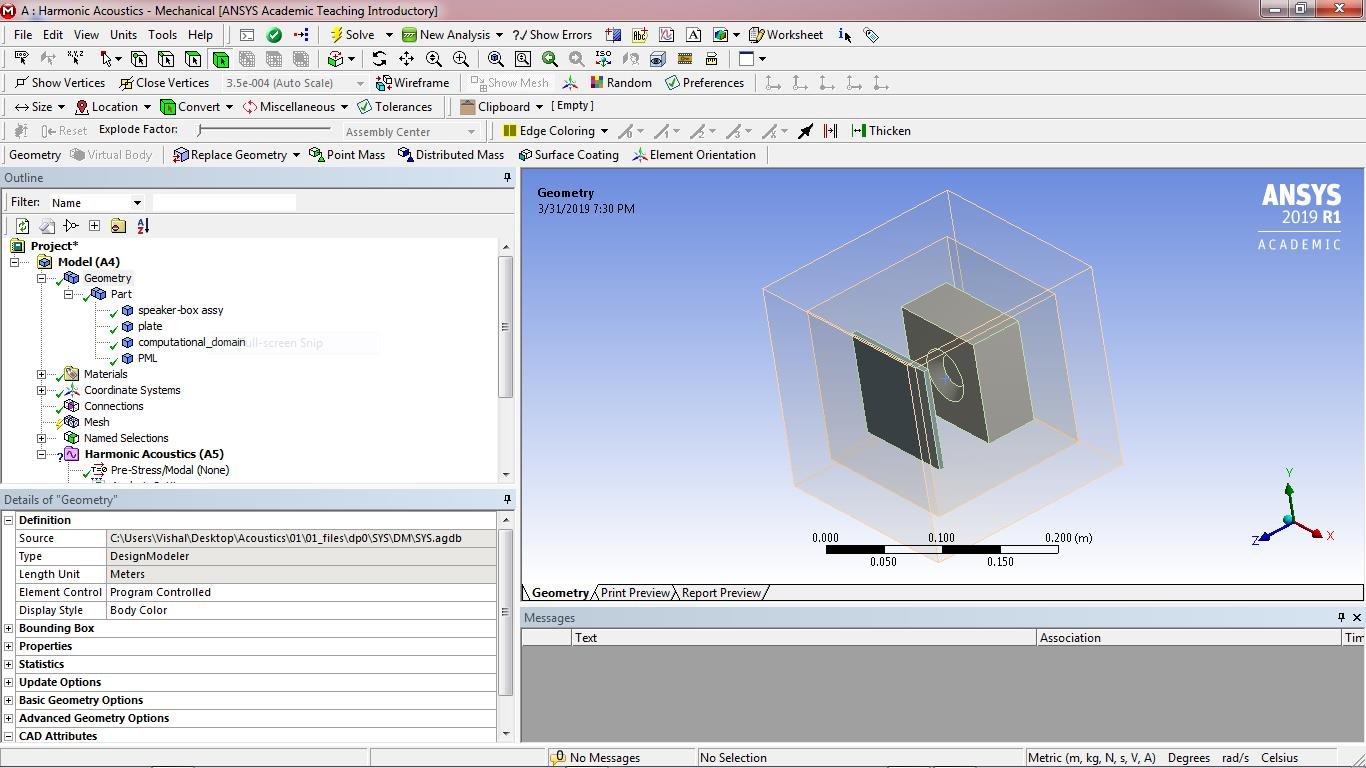

If iterations are to be made on the design, a good way to avoid repeating tasks in the pre-processing phase when design changes is to define named selections on:Īcoustic bodies will be defined in Mechanical, so there is no real need of defining material properties in the Engineering Data. No specific boundary conditions will be needed on the horizontal boundaries as the absence of condition is equivalent to have no reflection on the boundaries. Thus, the geometry will look like the following one: Mechanical does not permit 2D acoustic analysis, but we can indeed use what CFD people call 2D1/2 by taking a thin slice of the whole model with one single layer of elements in the vertical direction. Since we can neglect phenomena in the vertical direction, it is possible to downsize even more the model. Indirectly Performing 2D Acoustic Analysis in Ansys Mechanical As far as HVAC meshing is concerned, this will alleviate engineers from an otherwise convoluted (nightmarish) task.Įven though cyclic symmetry is not an option, as its current formulation only takes structural DOFs into account (pressure DOFs will be missing in the constraint equations), we can also take advantage of the linear periodicity in the horizontal plane by modeling only one channel.


In addition, removing the analogous the holes which greatly simplifies both the geometry and the analysis. Instead of representing the perforated plate as is, concerning HVAC noise propagation, Ansys Mechanical enables us to use perforated plate models. Geometry PreparationĪt first sight, geometry may appear complex, since both fluid and structural parts must be considered:Īs it is highly recommended to avoid contact regions between parts, the geometry will be one single multibody part.

#Ansys acoustic tutorial pdf how to#
This article showcases the process of setting up an acoustic harmonic analysis by giving you tips and tricks on how to proceed to get quick and accurate results. This design is critical, as the result is often a trade-off between various criteria (geometry, pressure loss in the flow, transmission loss…)Īnsys R18 has new out-of-the box capabilities to help engineers run multiple simulations to understand the acoustic behavior of silencers. To help prevent from too much noise propagation, silencers or mufflers need to be designed. When building an HVAC system, people must often consider the noise that is generated by the flow in the ducts.


 0 kommentar(er)
0 kommentar(er)
